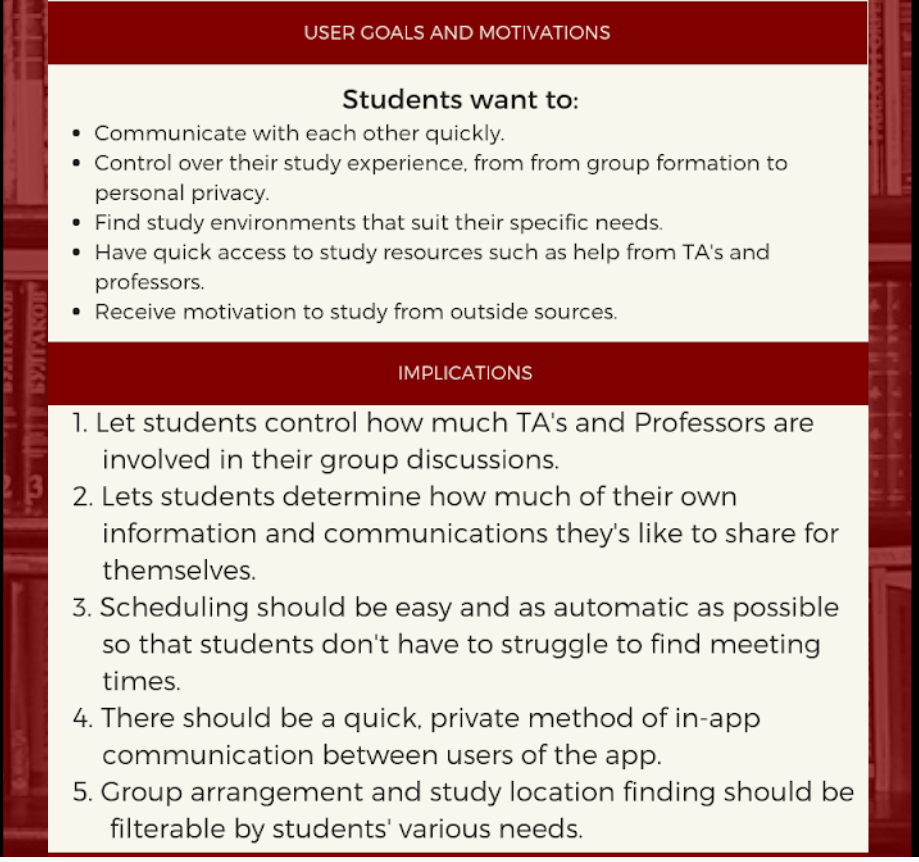USTUDY
The purpose of the UStudy application was to create an application that was not yet in existence that would help students at the University of Minnesota using User Interface and Design practices. To begin the process, my teammembers and I brainstormed various app ideas. After much deliberation, we settled upon an app that helped students find and form study groups. Once the idea was formed, we each performed a series of interviews on a diverse set of students to better understand what they felt would be beneficial to see in an app. We analyzed the transcripts from all of the interviews and found 5 main implications that our application must meet.
Once our implications were set, we began the ideation process. During this time, we proposed over 100 different ideas that our app should contain that met those 5 implications. We then grouped those ideas into categories, including, but not limited to, Features, Study Times/Locations, Security, and Group Dynamics. In pursuit of these qualities, we determined UStudy will offer UMN students the ability to form study groups in-app, and to communicate with all the standard features of a messaging service. Students and study groups will be able to use the app to find nearby study locations; they may then schedule events and meetings at these locations at times that work for them. UStudy users will be able to control which aspects of their personal information they share with others through the app, to ensure that their privacy and comfort are maintained.
The next step of our process was to actually create the application. We first created a POP, which allows hand-drawn sketches to be turned into interactive protoypes. This allowed us to have a better grasp on how the entire application would come together and made us aware of what pieces we were missing. Once our POP was complete and we included everything that met the features and implications above, we began coding the application using Android Studio. Using the POP, we delegated certain features and pages to each teammember to complete within a designated timeline.
Finally, in order to understand the strengths and weaknesses of our completed application, we had another diverse set of University of Minnestoa students use our apps and collected feedback. We asked them to perform both “think aloud” walk throughs as well as summative tasks to obtain time-to-complete-a-task data, misstep data, and overall feedback. From those analytics, we were able to determine futuristic modifications to the User Interface Design to better the application.


